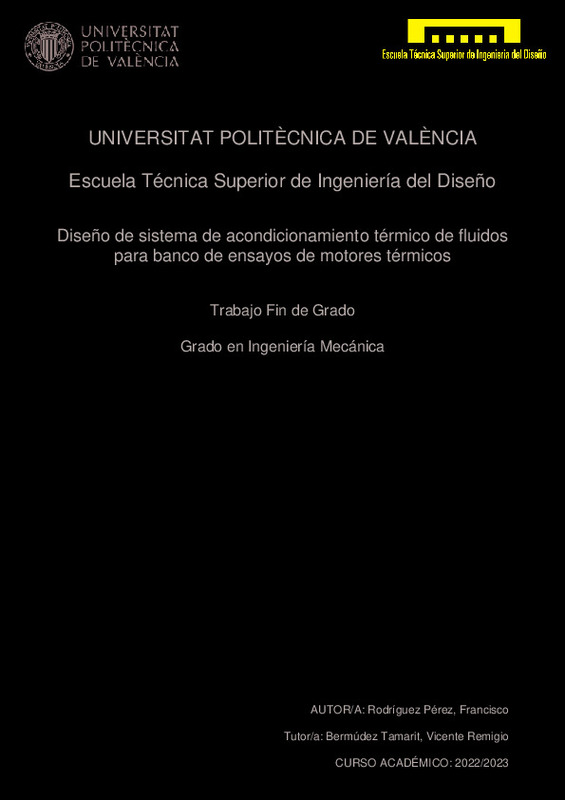JavaScript is disabled for your browser. Some features of this site may not work without it.
Buscar en RiuNet
Listar
Mi cuenta
Estadísticas
Ayuda RiuNet
Admin. UPV
Diseño de sistema de acondicionamiento térmico de fluidos para banco de ensayos de motores térmicos
Mostrar el registro completo del ítem
Rodríguez Pérez, F. (2023). Diseño de sistema de acondicionamiento térmico de fluidos para banco de ensayos de motores térmicos. Universitat Politècnica de València. http://hdl.handle.net/10251/197041
Por favor, use este identificador para citar o enlazar este ítem: http://hdl.handle.net/10251/197041
Ficheros en el ítem
Metadatos del ítem
| Título: | Diseño de sistema de acondicionamiento térmico de fluidos para banco de ensayos de motores térmicos | |||
| Otro titulo: |
|
|||
| Autor: | Rodríguez Pérez, Francisco | |||
| Director(es): | ||||
| Entidad UPV: |
|
|||
| Fecha acto/lectura: |
|
|||
| Resumen: |
[ES] Este trabajo tiene como objetivo global el diseño de un sistema de acondicionamiento térmico para controlar la temperatura y el flujo másico de fluidos, requeridos en bancos de ensayos utilizados para desarrollar ...[+]
[EN] This work has as a global objective the design of a thermal conditioning system to control the temperature and mass flow of fluids, required in test benches used to develop alternative internal combustion engines.
As ...[+]
|
|||
| Palabras clave: |
|
|||
| Derechos de uso: | Reserva de todos los derechos | |||
| Editorial: |
|
|||
| Titulación: |
|
|||
| Tipo: |
|
recommendations
Este ítem aparece en la(s) siguiente(s) colección(ones)
-
ETSIADI - Trabajos académicos [9093]
Escuela Técnica Superior de Ingeniería Aeroespacial y Diseño Industrial







